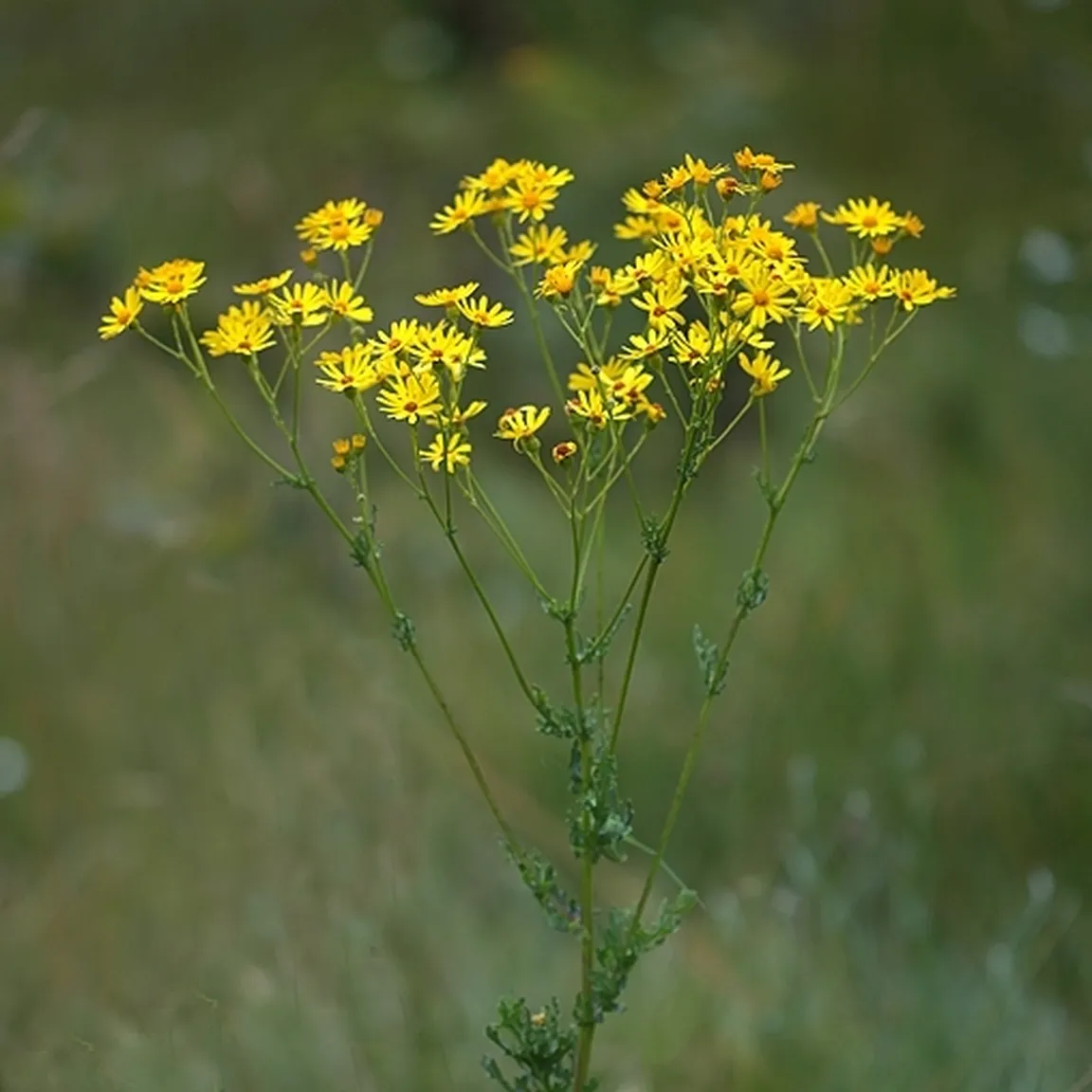Family: daisy family (Asteraceae)
Blooming period: July–September
Size: 30–100 cm
Habitat: pastures, forest edges, shrubby slopes and road verges
St. James's ragwort or St. James's cross (Senecio jacobaea) is a tall biennial or perennial without developed dwarf shoots. Feathery-lobed middle stem leaves have auricles at the base that clasp the stem. The lower stem leaves are usually lyrate (the terminal segment is much larger than the others), sometimes also entire. The leaf segments are irregularly blunt-toothed. At the tops of the shoots many bright yellow heads develop. From 12 to 15 golden-yellow ligulate flowers surround numerous tubular flowers in the center of the head, to which 13 green involucral leaves are attached from below. The fruits of tubular florets are densely hairy, the fruits of ligulate florets are bare.
St. James's ragwort thrives on nitrogen moderately rich soils with a medium humus content in moderately warm, sunny locations. St. James's ragwort is widespread throughout Slovenia, most common in the southwestern part and in the northwestern part of the country, while it occurs more sparsely in between.
St. James's ragwort is poisonous to mammals and birds!


